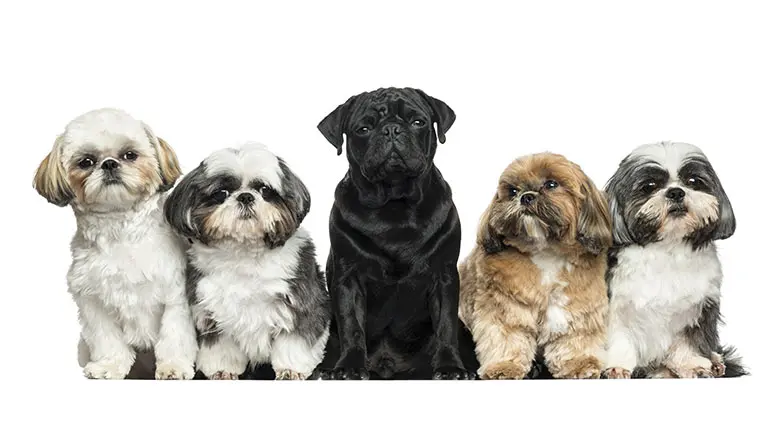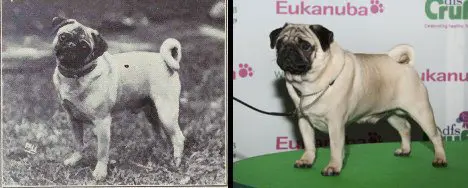Owners Relinquishing Purebred Pug and Shih Tzu in Record Numbers
We're in the midst of a genetic experiment as 80% of the breeds today were created in just the last 100 years or so. And because of breeders' affinity for extreme head shapes, they've created a virtual expressway to shelters, filled with adorable pets whose owners couldn't cope.

STORY AT-A-GLANCE
- Owners of certain dogs in the UK are abandoning their pets in record numbers because they can’t cope with the health problems associated with the breeds
- The dogs being relinquished to shelters are primarily brachycephalic (short-muzzled) breeds, especially the Pug and the Shih Tzu
- Many dogs with brachycephalic respiratory syndrome require surgery to allow them to breathe and live normally
- The suffering these pets endure could be easily avoided if breeders would simply stop selecting for extreme exaggerations of brachycephalic traits
Editor's Note: This article is a reprint. It was originally published January 13, 2016.
A recent disturbing headline in the UK's Telegraph caught my eye:
Pedigree dog owners 'abandoning their pets in alarming numbers.' Owners are reportedly finding it difficult to cope with health problems associated with the breeds.1
Apparently Pugs and Shih Tzus, both brachycephalic breeds, are increasing in popularity across the UK, which is exposing the heartbreaking reality that many of these dogs have health problems so serious their owners aren't equipped to deal with them.
"Brachy" is a Greek word meaning short, and "cephalic" means head. Brachys are short-headed, short-muzzled breeds. Other examples of brachy dogs include the Boston Terrier, Boxer, Bulldog, and Pekingese. Himalayans and Persians are examples of brachycephalic cat breeds.
At the Battersea Dogs & Cats Home in south London, the number of Pugs entering the shelter has almost tripled in just five years, and the number of abandoned Shih Tzus has also increased significantly.
This has prompted the shelter to issue a warning that "poor breeding practices are compounding problems associated with the breeds' trademark squashed, short nosed faces, a feature popular with owners."
The veterinarians working with Battersea have performed surgery on about 20 dogs in the last year to assist their breathing.
Brachycephalic Respiratory Syndrome
Due to their altered facial construction, all brachys have what is called brachycephalic respiratory syndrome to varying degrees. These pets often have very small, tightly scrolled nostrils that are so narrow it can be hard to move air in and out.
They also have an elongated soft palate, which is a flap of skin at the back of the throat that causes the characteristic snorting and other respiratory sounds often heard in brachy breeds.
Often the windpipe in these animals is very narrow in places, which leads to a condition called tracheal stenosis. This problem can predispose the animal to tracheal collapse, as well as problems with anesthesia.
Thanks to all these upper airway challenges, brachycephalic dogs often don't pant efficiently, which makes them prime candidates for heat stroke.
Brachycephalic respiratory syndrome can be a progressive condition, so these animals can develop problems with the trachea or larynx over time. It's important to get such issues addressed as soon as they appear rather than waiting until a pet develops significant respiratory distress.
A Pug Named Peanut
At Battersea, the plight of a Pug named Peanut is being highlighted to help people understand the suffering these dogs endure. Peanut is 4 years old and was relinquished to the shelter with breathing problems so severe he needed surgery.
According to Dr. Shaun Opperman, a veterinary surgeon at Battersea, Peanut "… could hardly breathe and his normal dog behaviours were severely restricted. Even going for a walk or eating would severely impact his health." Opperman continues:
"It's very distressing to see an animal in such a bad way like Peanut was. As often with these dogs, the nostrils are quite constricted so there's no room for the air to move in. We literally take a wedge out and open them right up.
It's always a risk doing these operations, but Peanut's life would've been in danger if we didn't do it."
Fortunately, Peanut found a new forever home after his surgery.
'The Serious Welfare Problems Suffered by Brachycephalic Dogs Like Pugs Are Easily Prevented'
The Telegraph blames poor breeding for the Pugs' plight, stating "[b]reathing problems with pugs commonly occur in their early years and are the direct result of breeders deliberately breeding them to have an extreme head shape."
The Royal Society for the Prevention of Cruelty to Animals (RSPCA), a U.K. animal welfare group agrees, stating:
"The serious welfare problems suffered by brachycephalic dogs like Pugs are easily prevented — if breeders consciously avoided selecting for such extreme head shapes, the welfare problems highlighted would not exist."
The image below on the left is from a 1915 book titled "Dogs of All Nations." The picture on the right is today's poorly bred version of the Pug on the left.

You can see that the modern day Pug has been bred to exaggerate his brachycephalic characteristics.
The result is a dog that often suffers from high blood pressure, heart problems, low blood oxygen levels, breathing problems, a tendency to overheat and develop heatstroke, dental issues, and skin fold dermatitis.
This poor dog also has a "highly desirable" double-curl tail, which is actually a genetic defect that can result in paralysis.
According to Wayne Cavanaugh, present of the United Kennel Club (UKC), which encourages the breeding of healthy, functional dogs, the changes in dog breed appearance are incremental and develop slowly. The good news is they can be undone the same way.
Cavanaugh doesn't think people realize that 80% of the breeds we see today were created in just the last 100 or so years. We've been in the midst of a genetic experiment. But it also means that we can change the way a breed looks very quickly — within a couple of generations. And that's good news, because we've really ruined a number of breeds.
Helping Your Pug, Shih Tzu, or Other Brachy Pet Breathe Better
Breathing difficulties can prevent your furry companion from being able to enjoy the very simplest things dogs naturally love to do, like eating, sleeping, play and exercise.
Dogs with severe brachycephalic airway syndrome can have almost continuous difficulty getting enough air. It's not unusual for these dogs to collapse from lack of oxygen. Left untreated, the problems tend to progress over time, with worsening symptoms.
It's important to learn the difference between normal and abnormal breathing sounds in your pet, and to make an appointment with a veterinarian if you notice any unusual breathing or other signs of respiratory distress. Unfortunately, surgery is often the only option to resolve significant breathing difficulties resulting from brachycephalic airway syndrome. The treatment goal is to surgically remove the tissues or structures causing airway obstruction.
Things you can do as the owner of a brachy include keeping your dog or cat fit and trim. Overweight and obese animals have much more serious respiratory difficulties than those who are kept at an ideal weight.
Keeping your dog out of hot, humid environments is also important to support normal respiration and prevent overheating.
And since stress exacerbates virtually every health problem, especially breathing difficulties, keeping your animal companion's life as stress-free as possible is also recommended to support your pet's health and quality of life.











